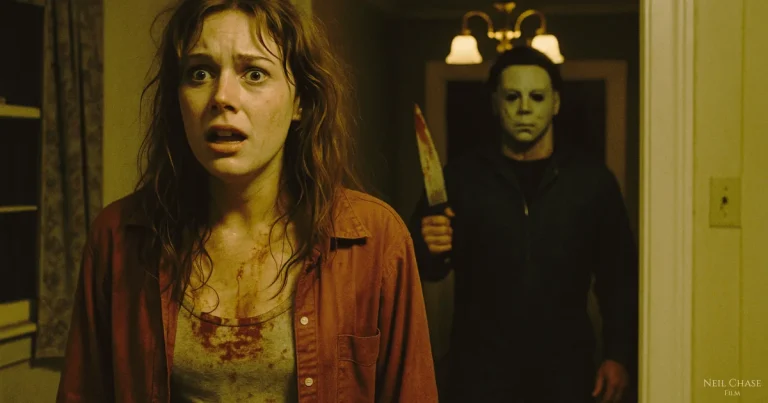The Anti-Villain: How to Write the Most Complex Villain in Fiction

Sometimes, the scariest villain isn’t the one with a plan to destroy the world.
It’s the one who means well. The one who feels pain. The one who almost could’ve been the hero – if life had gone just a little differently.
Today, we’re breaking down the Anti-Villain archetype – a villain so layered, so emotionally rich, they blur the line between good and evil.
If you love writing characters that challenge your readers, or if you just want to create a villain that’s more than a cackling cartoon, this one’s for you.
Let’s get into what the Anti-Villain really is, why audiences love them, and how you can write one your readers won’t forget.
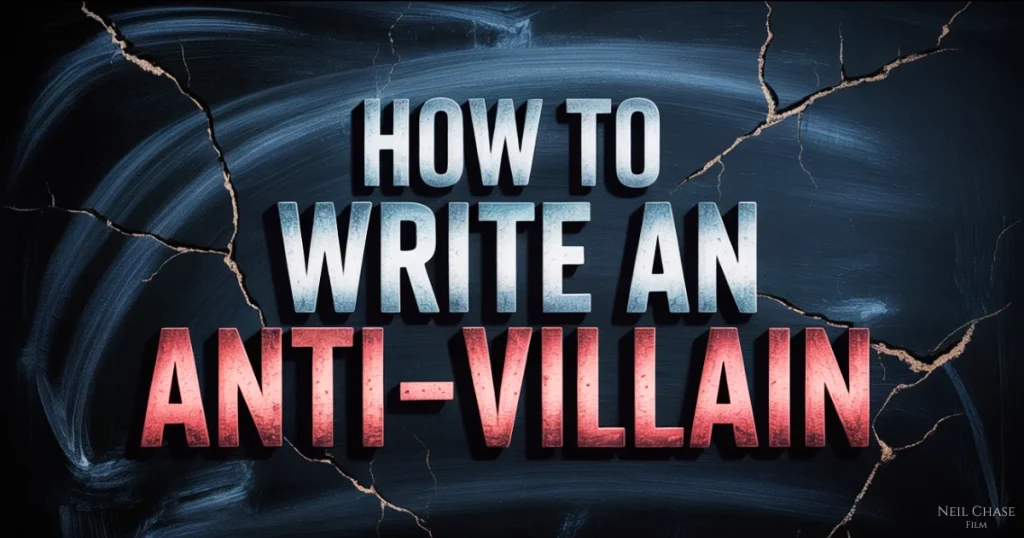
What’s the Difference Between Heroes, Villains, and Anti-Villains?
Before we get deep into the Anti-Villain, we need to get clear on the main character types:
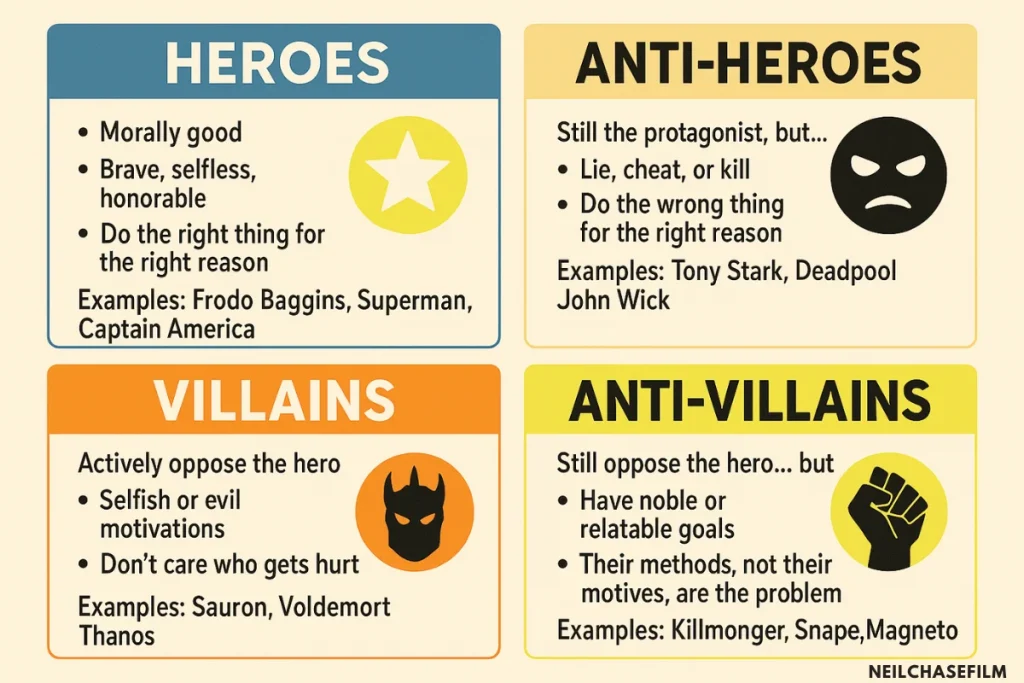
Heroes
- Morally good
- Brave, selfless, honorable
- Do the right thing for the right reason
Examples: Frodo Baggins, Superman, Captain America
Anti-Heroes
- Still the protagonist, but…
- Lie, cheat, or kill
- Do the wrong thing for the right reason
Examples: Tony Stark, Deadpool, John Wick
Villains
- Actively oppose the hero
- Selfish or evil motivations
- Don’t care who gets hurt
Examples: Sauron, Voldemort, Thanos
Anti-Villains
- Still oppose the hero… but
- Have noble or relatable goals
- Their methods, not their motives, are the problem
Examples: Killmonger, Snape, Magneto
Quick way to think about it:
- Anti-Hero: Good person doing bad things.
- Anti-Villain: “Bad” person doing something almost good, or something good, the wrong way.
That tension? That inner conflict? That’s the gold.
Prefer to watch rather than read? Check out my YouTube video all about the Anti-Villain Character!
What Is an Archetype?

An archetype is a familiar character type we see again and again across stories. Think of it like a blueprint: it’s not a box, but a starting point.
The Anti-Villain is one of the richest archetypes to play with.
Why? Because it’s built on contradiction. And contradiction is where character magic happens.
Why Are We So Drawn to Anti-Villains?
Let’s be honest: clean-cut good guys can get boring. We like mess. We like flaws. We like thinking, “Would I have done the same thing?”
Anti-Villains:
- Force us to think
- Show us the gray areas of morality
- Are often more emotionally complex than the hero
They make us feel – conflicted, guilty, uncertain – and that makes them unforgettable.
Strengths of the Anti-Villain
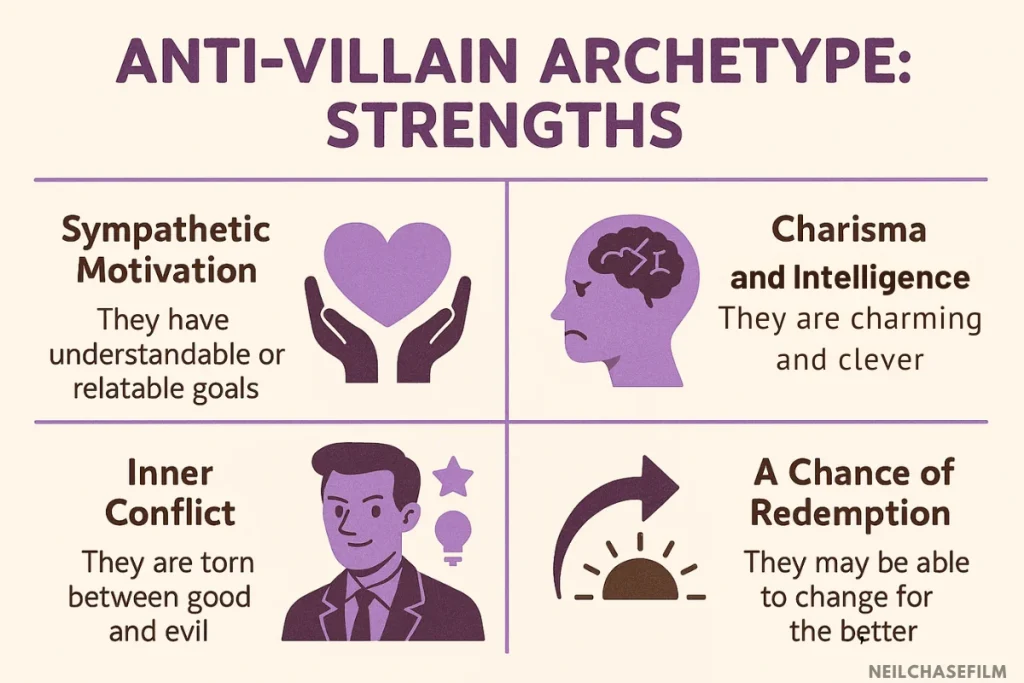
A well-written Anti-Villain brings more to your story than just conflict. They add layers of meaning and emotional weight. Here’s how:
1. Sympathetic Motivation
Anti-Villains don’t destroy the world for fun. They often want:
- Justice
- Revenge
- Safety
- Love
- Survival
Example: Erik Killmonger (Black Panther)
He’s angry for a reason. He grew up abandoned, watching injustice from the sidelines. His plan? Horrifying. But his pain is real, and it makes sense.
2. Inner Conflict
Some Anti-Villains know they’re the villain – and hate it. That self-awareness makes them unpredictable.
Example: Severus Snape (Harry Potter)
Cruel on the outside, tormented on the inside. His every move is shaped by guilt and love. When the truth is revealed, our view of him changes forever.
3. Charisma and Intelligence
These villains steal the scene. They’re often charming, clever, or just… watchable.
Example: Hannibal Lecter (Silence of the Lambs)
A literal cannibal who still manages to be magnetic and elegant. You should hate him – but you don’t look away.
4. A Chance at Redemption
Anti-Villains have that spark – a glimmer of something good.
Example: Gru (Despicable Me)
He adopts orphans for selfish reasons… and ends up loving them. That change makes him human, not just entertaining.
Weaknesses of the Anti-Villain
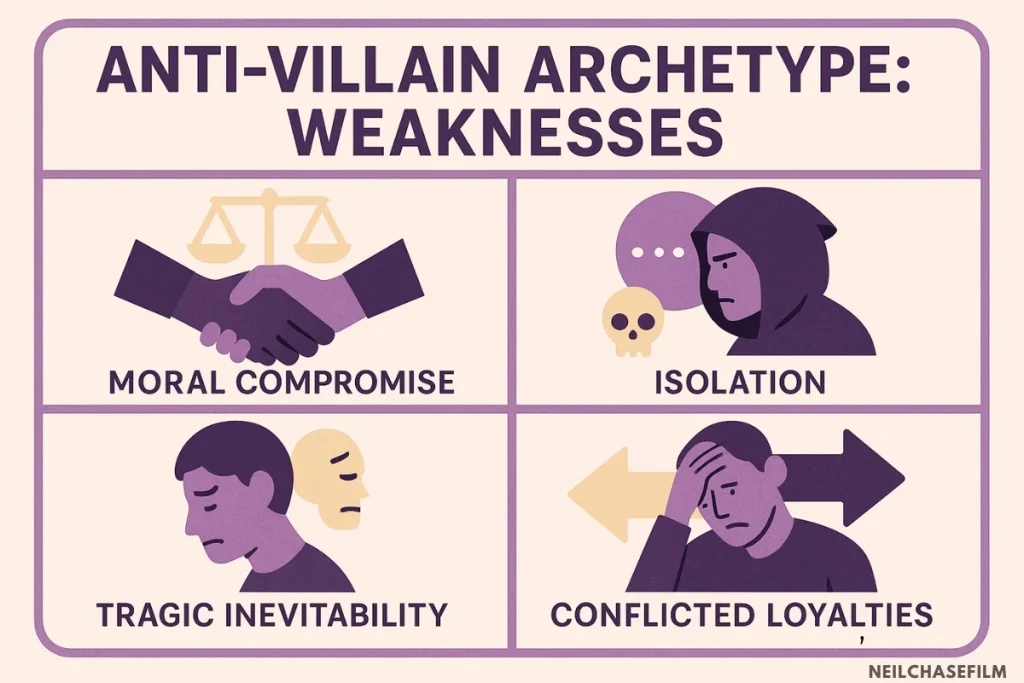
These flaws aren’t bugs, they’re features. Weakness makes your Anti-Villain human.
1. Moral Compromise
They start with good intentions, but their actions blur the lines.
Example: Dexter Morgan (Dexter)
He kills bad guys. But as his code cracks, he begins making excuses. More people die. The line between justice and murder fades.
2. Isolation
Anti-Villains often push people away, either on purpose or by accident. That loneliness can destroy them.
Example: Clubber Lang (Rocky 3)
He fights for a fair shot. But his pride isolates him, and when he needs help the most, no one’s there.
3. Tragic Inevitability
Sometimes, they can’t escape who they’ve become.
Example: Patrick Bateman (American Psycho)
He’s numb, violent, empty. He knows it. And he still can’t stop.
4. Conflicted Loyalties
They may betray others, or themselves.
Example: Mr. White (Reservoir Dogs)
He’s loyal to the wrong person and pays the price. Emotion clouds logic, and his moral code destroys him.

10+ Iconic Anti-Villain Examples
Here are some standout Anti-Villains that show just how different this archetype can be:
- Vincent (Pulp Fiction): A hitman who prays, talks morals over burgers, and fears messing up.
- Jules (Pulp Fiction): Begins as a killer. Ends as a man seeking redemption.
- Draco Malfoy (Harry Potter): Not evil, just scared, young, and stuck in a family legacy.
- Magneto (X-Men): Survivor of genocide. His fear and grief fuel his violent activism.
- Walter White (Breaking Bad): Starts as a desperate dad. Becomes a kingpin. Slowly loses himself.
- Megamind (Megamind): A villain who finds out being evil isn’t as satisfying as he thought.
- Kronk (Emperor’s New Groove): Works for the bad guy, but has a heart of gold and a moral compass (plus great cooking skills).
- Sandman (Spider-Man 3): A desperate dad who just wants to save his daughter.
- Mr. Freeze (Batman: The Animated Series): Commits crimes to save his dying wife. His story is heartbreak wrapped in ice.
- Tyler Durden (Fight Club): Starts as a freedom fighter. Becomes a violent extremist – revealing just how far ideals can twist.
How to Write a Great Anti-Villain

So how do you write your own Anti-Villain? One who sticks with readers and makes them feel?
Here are 3 simple, powerful tips:
1. Start With the Wound, Not the Crime
Good Anti-Villains are born from pain.
Ask yourself:
- What happened to them?
- What are they afraid of?
- What belief do they cling to that justifies what they do?
Example: Magneto
He’s seen the worst of humanity. That trauma shapes his every move.
2. Make Them Challenge the Hero
A strong Anti-Villain exposes flaws in your hero.
Ask yourself:
- How is the Anti-Villain right?
- What truth do they speak that the hero needs to hear?
Example: Roy Batty (Blade Runner)
He’s violent, sure. But he also makes us question what makes someone human.
3. Show a Moment of Doubt or Clarity
Even if they don’t change, they should pause. We should see the crack.
Ask yourself:
- Where do they hesitate?
- When do we see the person behind the villain?
Example: Snape’s death scene
Everything clicks into place. He was never the monster we thought.
Wait… So Are They Villains or Heroes?
That’s the beauty of it: they’re both.
Anti-Villains show us what it means to struggle with morality. They’re not good. They’re not evil. They’re complicated.
And in today’s stories, that’s exactly what makes them shine.
So, next time you’re building your antagonist, ask:
- What makes them human?
- What makes their goal relatable?
- And most of all—what makes them hurt?

A Little Evil, A Lot of Heart ❤️
The Anti-Villain might never get a happy ending. They might never be fully forgiven. But their stories stay with us.
We remember them because they show us that even in darkness, there’s light. Even in cruelty, there’s pain. And even in villains, there’s a chance, even if just a small one, for redemption.
So go ahead. Write a villain who breaks our hearts.
Because sometimes, the best villains… are almost heroes.
Liked this guide? Don’t forget to check out my horror-western novel, Iron Dogs, or catch Spin the Wheel for free on Tubi to see some Anti-Villains in action.
Want help with your own story? I offer coaching, notes, and full script consulting at neilchasefilm.com.
Until next time – stay creative and keep those characters complicated!

